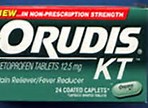Recent information came to light that Ionis is still continuing pursue a drug for myotonic dystrophy. The first trial ended and was not successful. What we learned is that the team was impressed that progress was made. Rather than pursue this initial drug they may be switching to a new more highly improved drug. This makes sense as the cost to pursue a drug is high $$$$ and you want your best candidate forward.
Tag Archives: cure myotonic dystrophy
Potential Myotonic Dystrophy Drug Fails! – Ionis Myotonic Dystrophy Drug fails to reach minimal therapeutic value
In a instant news email the Myotonic Dystrophy Foundation (MDF) released information that the Ionis Pharmaceutical Drug DMPK-2.5Rx research project has been canceled. The drug DMPK-2.5Rx did not work, and did not get the correct amount of therapeutic drugs into the cells of the patients with myotonic dystrophy. The company may still continue research on a more potent combination but the current trial is halted.
This is hard to hear news for the myotonic community. This is the second drug in development to fail. This new drug is part of a number of new generation of interest drugs in trying to find a drug to treat the disease. There are still a number of drugs in development but the Ionis one was the most advanced. Perhaps the information in this trial will be of help to the other drugs in development. For those in the late stages of the disease the length of time to find a treatment that is FDA approved in unlikely now.
There continues to be some “off label” treatments including erythromycin and some NSAIDS as well as Actinomycin-D but none have had any proven human effect.
More information below.
Ionis Pharmaceuticals Reports on
DMPKRx Phase 1/2 Clinical Trial
|
Case study report of experimental use of approved FDA drugs to reverse myotonic dystrophy symtoms (DM1)
Encinitas, CA Two recent published studies reviewed the use of FDA approved drugs in Mice that reversed some myotonic dystrophy symptoms. The mice showed improvement in muscle strength after a regime of using these approved rugs in appropriate dosages.
My son Chris has Congential Myotonic Dystrophy with a repeat count of about 1700. He is severely affected being non-verbal, cognitive delays, autistic spectrum disorder, and some muscle involvement. Chris also has the adult form of the disease as he reached puberty and has a level 1 heartblock, excessive sleepiness and other adult symptoms.
He has had 3 bouts of respiratory collapse. This initially involved a Hospital Stay, MSRA pneumonia. Within a very short period of time of initial symptoms he was in the ICU on a respirator and full dosages of heavy antibiotics including vancomycin. Recovery was uncertain and very slow. Tracheotomy was performed as weaning from the respiratory was difficult and dangerous. Full recovery was accomplished at 120 days. USA Hospital costs was approximately $750,000 for this. Two other bouts of respiratory collapse related to pneumonia occurred with similar outcomes.
We decided to pursue an experimental course of treatment with these FDA approved drugs due to concerns that he might not survive another bout of respiratory collapse.
In April 2016 we initiated a course of treatment on Erythromycin after consultation with pneumologist, cardiologist, cardiology expert in DM, and primary care Physician. The Primary care physician wrote the script for erythromycin. The cardiology team was involved as there is a contraindication for erythromycin with cardiac arrhythmia’s. The course was 2X daily 125mg of Erythromycin orally.
In May 2016 we added a daily dose of 80 Mg of Ketoprophen as this drug was found to have a positive effect on mice as well in ameliorating the myotonic dystrophy symptoms.
Results: We did not use any formal metrics in evaluating the results of the trials. The main reporting point was discussions with caregivers to see if there was any improvement in cognitive or strength related improvement in the patient. These conversations were all convergent in :
Overall Muscle strength NOT IMPROVED
Overall Cognitive Abilities NOT IMPROVED
Chest Congestion DECREASED SOUNDS
OF SECRETION CLEARING
# of Pneumonia Infections IMPROVED
Overall the results of this 8 month trial did not replicated the information in the two mice studies. There was no increased muscle strength noted by caregivers. There did seem to be a significant improvement in clearing secretions in the lungs which is a critical factor in this patients Quality of Life (QOL). No Pneumonia infections were reported. this is a significant improvement over the last 12 months.
Discussion: Overall it appears that this therapy may have had an positive impact on the patient. Overall the results of this one case did not replicate the studies that used mice in terms of improvements in muscle strength. this may be due to a number of reasons including dosing strength. It could also be that the mice that are created to have myotonic dystrophy are not the ideal method to test drugs the the DM in these mice may be more susceptible to disruption that the actual DM gene in human patients.
Patients with Congenital Myotonic Dystrophy and certain other patients (older than 57) are currently excluded from clinical new drug trials. Myotonic Dystrophy is slowly progressive until an exponential event occurs. Because of the risk of sudden death and pneumonia with these cases is ongoing looking for alternatives to reduce risk of death may be warranted by patients health care team.
Phenylbutazone & NSAIDS – Another potential treatment(s) for Myotonic Dystrophy
Another paper has been published and revealed another potential treatment for myotonic dystrophy, Phenylbutazone PBZ.. Interestingly this study was also done in Japan………… now a hotbed of repositioning drugs for treatment of myotonic dystrophy. some info from the study
“Using the drug repositioning strategy, we found that PBZ markedly elevated MBNL1 expression in myogenic cells(Fig. 1 and Supplementary Fig. S1) as well as in skeletal muscles in HSALR mice model (Fig. 2 and Supplementary Fig. S2). PBZ mitigated muscle pathology (Fig. 2d,e) and improved the running wheel activity and grip strength
in HSALR mice (Fig. 2c and Supplementary Fig. S2d).”
This summary above showed that in mice this drug helped mice with myotonic dystrophy run on the wheel better and had better grip strength. More info below
PBZ is an NSAID with anti-inflammatory, antipyretic, and analgesic activities. PBZ was approved in humans for rheumatoid arthritis and gout in 1949. Although incidental adverse effects of fatal liver disease and aplastic anemia markedly lowered the use of PBZ, PBZ is still used as an alternative drug for ankylosing spondylitis32,33.
Interestingly, another NSAID, ketoprofen has been reported to suppress CUG-induced lethality in Drosophila34, and we also found that 50 μ M ketoprofen upregulated the expression of Mbnl1 mRNA 1.2-fold in C2C12 cells, which was lower than the 1.3-fold increase of Mbnl1 mRNA by 50 μ M PBZ (Supplementary Fig. S6). Ketoprofen
and some other NSAIDs may have beneficial effects on a mouse model of DM1, as well as on DM1 patients.
Editors Note: This drug (PBZ) approval was removed for humans in 2003 in the USA and Canada. It is available for use in animals only. The drug Ketoprofen was not studied in depth but is an approved NSAZID drug in the USA. We have choosen the image of Ketoprofen as this is an approved drug in the USA.
Full study is Here.. Phenylbutazone Treatment DM1 mice
Prosensa recieves 5 million Euros for Myotonic Dystrophy Research
The USA is not the only location where drug development for myotonic Dystrophy is taking place. Here is a one year old report (October 2011) on the research in the Netherlands for Myotonic Dystrophy treatment. Prosena also receive an Emerging Star award this year for the most innovative biotech company in Europe. They also announced a 23 million euro financing round in January. Prosensa has about 4-5 potential drugs for Duchene Muscular Dystrophy in development and we are very happy that they are looking at Myotonic Dystrophy as a therapy as well.
Prosensa Awarded up to €5m Innovation Credit from Dutch Government for research in Myotonic Dystrophy
October 25, 2011
For immediate release
Leiden, The Netherlands, October 25, 2011 – Prosensa, the Dutch company focusing on RNA modulating therapeutics for rare diseases with unmet medical needs, announced today that it has received an innovation credit of up to €5m from AgentschapNL, a subsidiary of the Dutch Ministry of Economic Affairs, Agriculture and Innovation, to support further development of a series of preclinical compounds for the treatment of Myotonic Dystrophy type 1 (DM1).
According to the terms of the agreement, Prosensa will receive €940,000 to support the initial stage of the project, with the potential to receive additional funding of up to €5m after successful completion of specific milestones and an initial review in 2012.
The genetic mutation underlying DM1 is characterized by expansion of so-called triplet repeats in the DMPK gene leading to transcripts with toxic effects. Prosensa applies its RNA modulation platform to reduce the number of these expanded repeat, toxic transcripts. One compound, PRO135, reversed the transcript toxic effects after in vivo intramuscular administration in preclinical DM1 models. Prosensa works in close collaboration with the department of Cell Biology, Nijmegen Centre for Molecular Life Sciences, Radboud University Nijmegen Medical Centre, on this project, one of the leading centres in DM1 research in the world.
Judith van Deutekom, Vice President of Discovery at Prosensa commented: “We are very pleased with this grant by the Dutch government, which allows us to accelerate our research in this important therapeutic area and helps us grow into a specialist rare disease company. The innovation credit from the Dutch government is intended to stimulate development of technologically innovative products. In addition to Duchenne muscular dystrophy, we are also working on a potential therapy for patients affected by Myotonic Dystrophy, yet another rare disease for which no treatment currently exists.”




